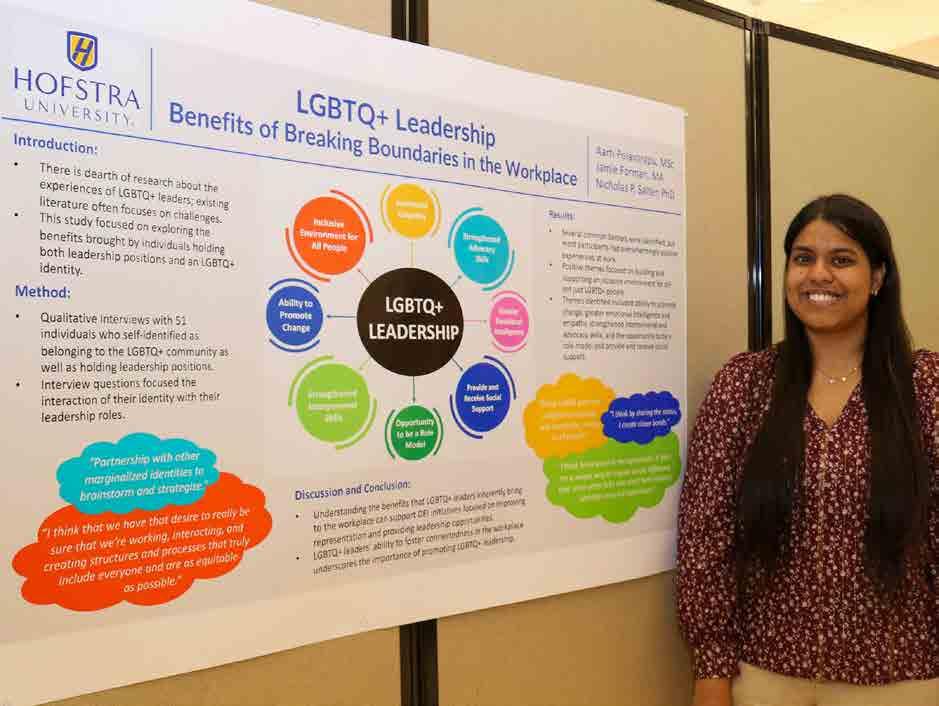
22 minute read
Race and Diversity Research
Aarti Polavarapu
In basic terms, please describe your research project.
Advertisement
For our research, we did qualitative interview data collection. My team conducted 52 interviews with people that identified with the LGBTQ+ community and held a leadership position in industry. Specifically, we interviewed leaders aged 19-70 from across the country. We wanted to see how these two identities interact and if the LGBTQ+ identity was beneficial in a leadership role or if it presented challenges. Even though we found that there were challenges and issues, many people said that their LGBTQ+ identity was a great benefit to their leadership role. Survey participants responded that their LGBTQ+ identity makes them more sensitive to others and allows them to develop strong relationships. Some hold the opinion that LGBTQ+ employees can be treated as a “buzzword” or “tokens,” but we found that LGBTQ+ leaders inherently bring advantages to their roles. These two identities allow for better advocacy for other employees and are more likely to produce support for others.
How did you become interested in this topic? What inspired you?
Dr. Salter has a research lab, the Workplace Inclusion Leadership and Diversity (WILD) lab, and that was interesting to me at the start of my graduate work. I asked if I could be a part of the lab, and we developed this topic.
Aarti Polavarapu
MA, Industrial/Organizational Psychology, May 2022 • Hometown: Delhi, India Project Title: LGBTQ+ Leadership: Benefits of Breaking Boundaries in the Workplace
Advisor: Nicholas Salter
Which professor did you work with, and how did they support you?
Dr. Salter helped us decide on whether to design a qualitative study, since it is not done as often as quantitative studies. We learned along the way, and Dr. Salter helped us with coding the interviews and how to find materials. It was a collaborative space, and we felt like partners.
Where do you see this research going in the future?
We have been working on this for two years. We are now trying to get the research out there so we can share positive results (since you tend to see negatives being presented in relation to the LGBTQ+ community). We presented this research last year at the River City IO Psychology Student Conference and won “Best Poster.” Currently, we are expanding our research analysis and writing an article that we hope to get published.
What career or educational plans do you have?
I was accepted to the PhD program in Industrial Organizational Psychology at Bowling Green State University in Ohio. Dr. Salter received his PhD from there as well; it is one of the best industrial organizational psychology programs in the country. Coming into the program at Hofstra, I thought I would go into more applied experience, but this research opportunity showed me how much I liked the research, and the topics are so interesting. Ultimately, I will probably pursue applied research.
Alexandra Attilli
Alexandra Attilli
BA, Political Science, May 2022 Hometown: Dayton, OH
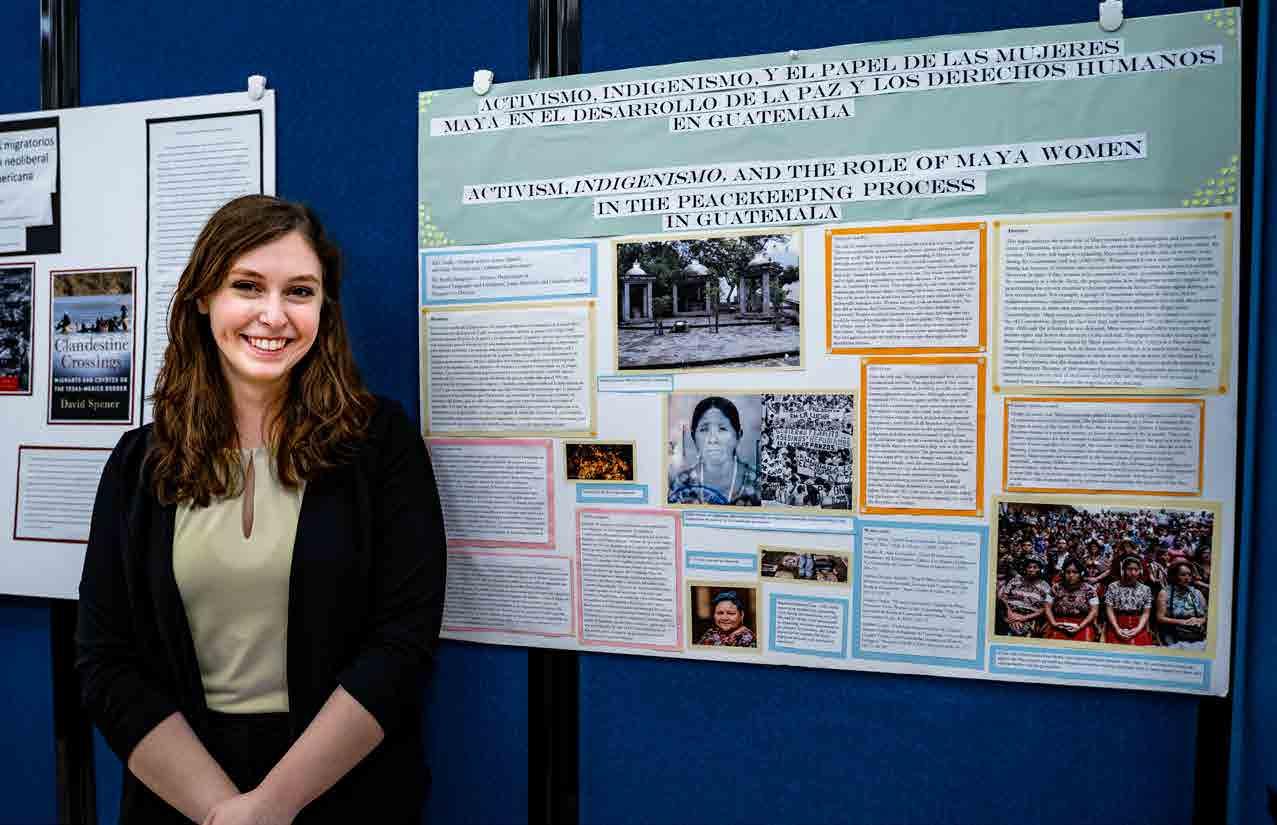
Project Title: Activism, Indigenismo, and the Role of Maya Women in the Peacekeeping Process in Guatemala
Advisor: Benita Sampedro Vizcaya
Written by Leah Chiappino
Senior political science major Alex Attilli studied the role of Maya women in the peacekeeping process in Guatemala. She found that women, who are left all too vulnerable in times of war, are often the ones that make the most sacrifices.
“They get up and start fighting on the front lines, too, but men won’t touch housework,” she said. “Women will sacrifice themselves so that men don’t get kidnapped; they know that if men are kidnapped, they’ll be killed, but women will be tortured. So, I wanted to show that women aren’t just victims. They’re agents of change.”
Attilli, who had minors in Latin American and Caribbean Studies and Spanish, also wrote about how women were behind the creation of a national memorial in Guatemala to educate future generations about the genocide and civil war.
Works from Rigoberta Menchú Tum, an Indigenous rights leader who won a Nobel Peace Prize in 1992 for her role in peacekeeping and the Guatemala Civil War, served as the basis of Attilli’s research. “I was able to use first-person narratives like hers and a couple of others to piece together women’s roles and to highlight a list of everything that women have done,” she said. “This shows that they’re not passive, they’re active.”
The Ohio native worked on the project for her Contemporary Hispanic Thought class, taught by Dr. Benita Sampedro Vizcaya, professor of Spanish colonial studies. “She is an absolutely wonderful professor,” Attilli said. “I absolutely adore her, and she’s just been a great inspiration to me in my research.”
After graduation, Attilli plans to attend law school and practice public interest law, with a focus on taking civil cases for those who cannot afford representation.
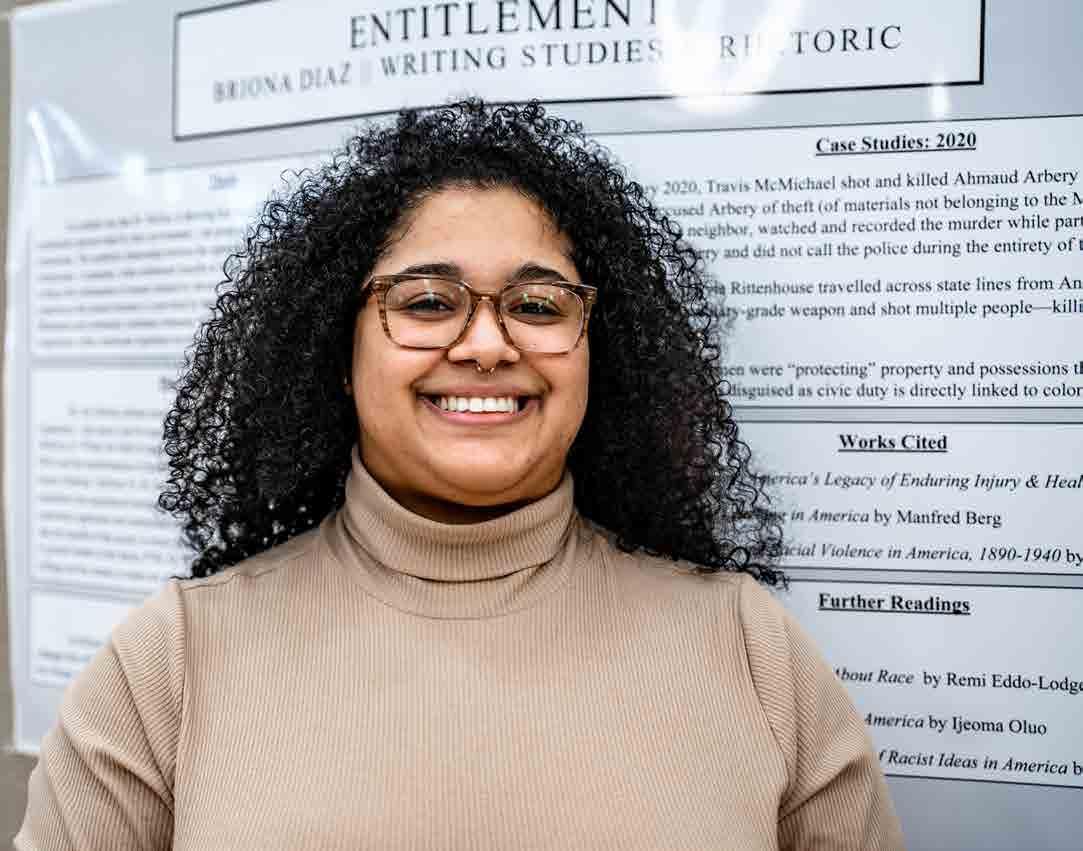
Briona Diaz
Briona Diaz
BA, English, December 2021 Hometown: Elmwood Park, NJ
Project Title: Entitlement
Advisor: Andrea Efthymiou
In spring 2020, Briona Diaz asked the question, “Why is this still going on?” As she saw reports of the killing of Ahmaud Arbery and George Floyd, amongst countless others, Diaz began to realize that the language around these cases was severely skewed against the victim of violence. Diaz had been having these thoughts and questions since she 14 years old, but now she was better equipped to analyze these horrific acts. These questions and realizations drove her research in the fall of 2021 and resulted in her receiving “high honors” for her senior thesis, “Entitlement.”
The thesis skillfully explored the relationship between white entitlement and Black trauma, specifically, the idea that white entitlement cannot exist without the onset of Black trauma. It is a “symbiotic and parasitic relationship.” At the start of her thesis development, Diaz was going to focus on the violence against Black bodies and the related history. However, she came to the realization that this research would not be helpful, “… because we already know this. Being Black myself, I have the experience, and I don’t need to be writing about it also. So, I started looking at the ‘doers’ of violence because they are not held to the same critical standards as the victims of their violence.”
Specifically, Diaz examined the concept that author Dr. Joy DeGruy explored in Post Traumatic Slave Syndrome, Black trauma – notably, that the trauma experienced by enslaved Black people can be inherited generationally. This trauma was seen in Black lynchings, historically, and exists today in cases of police brutality. Diaz theorized that, like Black trauma is caused by the environment, “... entitlement is also inherited by white Americans. The symbiotic relationship between the oppressed – Black Americans – and the oppressors – white Americans – is parasitic. White entitlement benefits at the expense of Black trauma and, therefore, cannot exist without the continuation of trauma initiated by slavery onto Black Americans.”
Diaz examined the cases of McMichael and Bryan, who murdered Ahmaud Arbery, and the case of Kyle Rittenhouse. She explored the connecting theme between the cases. In the slavery and post-slavery eras, Black codes (rules and laws that limited Black freedom) flourished and, as a result, white Americans
continued to be empowered to protect their property. Diaz theorizes that this empowerment exists today and is exemplified in these case studies, where the “doers” aimed to protect property – property that was not theirs. These cases have undertones of Colonial America and the language used, such as “concerned citizen,” reflects historical Black codes.
Diaz asked throughout her thesis development, “Is this my judgment, or is there history to back this up? I had to internalize this and look at my feelings. I had to make sure I was looking at the history and not my own feelings or prejudices. It was a slow process and emotionally exhausting.”
At the conclusion of Diaz’s research and thesis writing, she noted, “Nothing will change unless the people who hold the power let go, and I don’t think they will do that. White people can’t really help unless they make room for the people who need to be speaking. Everyone needs to sit at the table. But we are having the same conversations we had before the Civil Rights Movement.”
Professor Andrea Efthymiou from the Writing Studies Department was Diaz’s thesis advisor. Diaz accompanied Professor Efthymiou to a writing workshop this past September in Pennsylvania, where she had the opportunity to collaborate with other mentors and flesh out ideas. Diaz recalls that Professor Efthymiou inspired her to write freely and then would ask her questions that “allowed me to open up my ideas because she could not see things from my perspective ... she challenged me with my writing; she helped me slow down and expand my work.” Diaz learned that by explaining her ideas more thoroughly, this would allow others who don’t have her perspective to learn.
Diaz continued to edit her paper after submission. She noted, “this is something that I was told during my defense of the paper, that I set myself up for a doctoral dissertation!” One day, Diaz can see herself pursuing a PhD in Black history. Currently, Diaz is a 10th grade English language arts fellow with AmeriCorps, where she is working for half a year with an inner-city charter school. This summer, Diaz will be starting a graduate degree at the University of Arizona’s Rhetoric, Composition, and Teaching of English (RCTE) graduate program. Additionally, Diaz will be working as a high school English language arts teacher in Tucson. She states, “I am thoroughly looking forward to this next chapter in my life.”
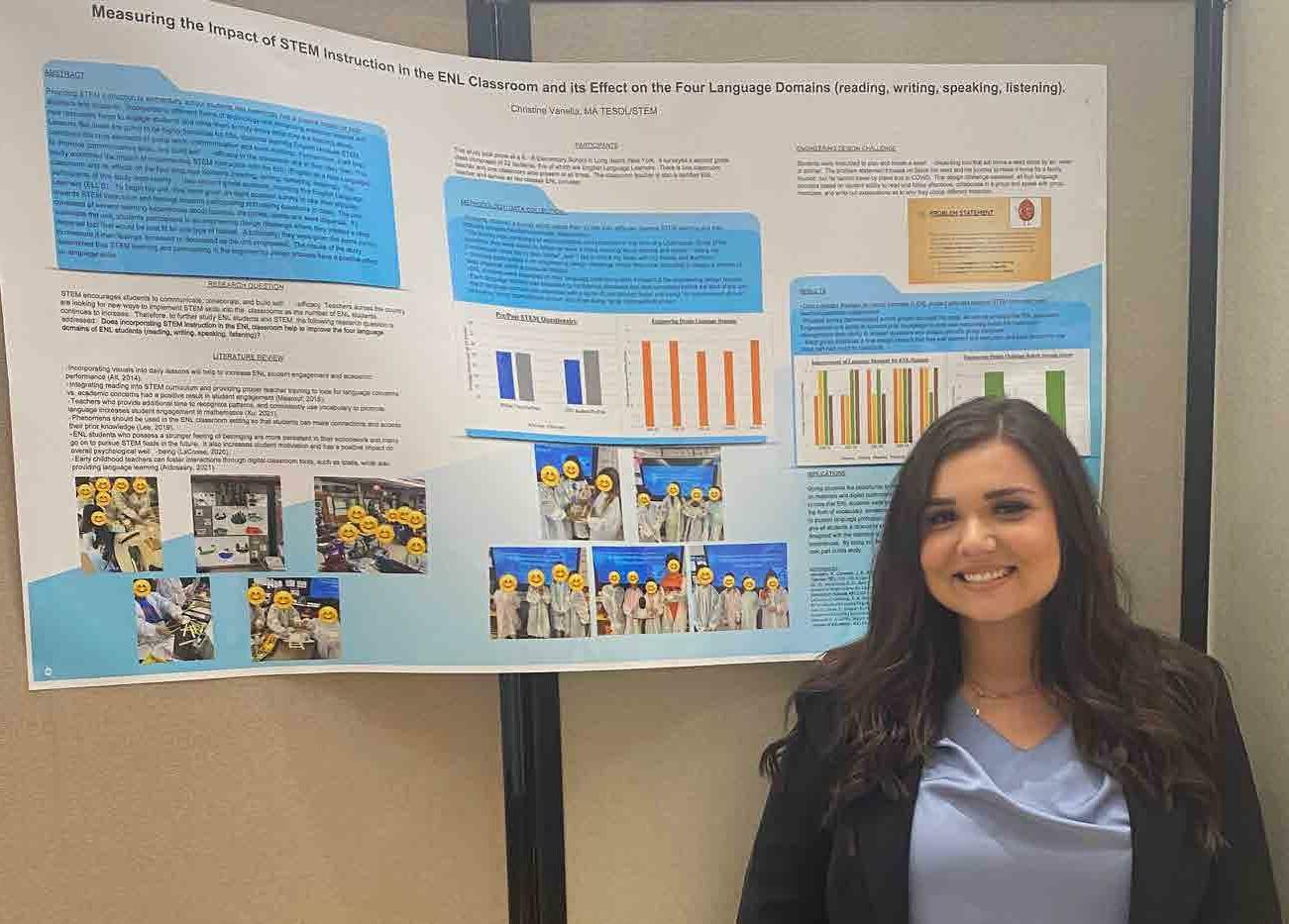
Christine Vanella
MA, Teaching English to Speakers of Other Languages (TESOL) with a concentration in STEM, May 2022 Hometown: Merrick, NY
Project Title: Measuring the Impact of STEM Christine Vanella Instruction in the ENL Classroom and its Effect on the Four Language Domains (Reading, Writing, Speaking, Listening)
Advisors: Amy Catalano, Alan Singer
I am an English as a New Language (ENL) teacher on Long Island. I work with students who come from a variety of language backgrounds, some born in the United States, some born outside the United States. My research project started with the question, “Does incorporating STEM instruction into the ENL classroom help to increase the four language domains, reading, writing, speaking, and listening?”
I designed an eight-lesson unit for second grade students that focused on habitats, seeds, and seed dispersal. I focused on five ENL students at different English language proficiency levels in the second grade. Throughout the unit, I aimed to assess their different levels of proficiency. In the beginning of the unit, I gave the students a survey that asked them to reflect on their feelings about STEM concepts and their comfort in the classroom, specifically with group work and asking teachers for help. For most of the students, this was a new concept that I needed to explain to them. The unit culminated in an engineering design challenge where the students were instructed to design their own method for seed dispersal for their assigned habitat. I told them a story about “Steve,” the coconut seed who needed to bring his family of seeds together for a reunion; due to COVID-19, the seed airport was shut down. The students were asked to come up with different ways to get Steve’s family to the reunion. The students came up with great designs and they all worked really well together. I provided these ENL students with many visual aids because there were a lot of products (e.g., digital tools) we were working with that were unfamiliar to them, and they needed to communicate in English.
I designed a rubric to evaluate the students as they were working on these projects. Toward the end, I asked a non-ENL teacher to help me assess the students’ progress in the four language domains, as she was not familiar with the students’ development thus far. Each student showed improvement independently and when compared to non-ENL students who participated in the unit. This project should give other teachers an opportunity to research and design STEM instruction. STEM is all around us, and it is something all students are familiar with.
Last year, there was an opening in my school building for an ENL teacher. Languages are something I have always been interested in, including accents. I am a very musical person, and I sang in other languages previously, so it has always been something that I have been interested in pursuing. So, when I enrolled at Hofstra for graduate school, I found the dual program in TESOL and STEM; this could not have been more perfect for me. It is really important for ENL students to be exposed to this kind of learning because it is not something you can always find in a textbook. They can look outside and see the trees and the grass; it is relatable.
I worked with Dr. Amy Catalano and Dr. Alan Singer. Dr. Catalano was my professor in many of my undergraduate and graduate classes. What I appreciated is that we didn’t do this all at once; we broke up everything into sections. She knows all the students are working teachers, so it was all spaced out in a way that was easy for us to complete in a timely manner. She was great with answering questions and revisions. Dr. Singer was able to observe one of the lessons in the unit, and his feedback was wonderful. He is great at catching things you may not even think about.
Many teachers are unaware or unfamiliar with what ENL or ESL is and how to differentiate instruction. I think it is important for teachers to know their students from the beginning and to get to know the different ways they will learn. Once you realize what those differences are, you can better tailor your instruction for every type of learner. My goal is to help educate non-ENL classroom teachers on how to see the differences in their students’ learning and how to include more STEM-related units in the classroom. STEM is a fantastic tool that everyone can relate to.
Currently, I am an ENL teacher for all grades in the North Merrick UFSD, and I hope to continue teaching either as an ENL or classroom teacher.

Ciara Negron
Ciara Negron
BS, Sustainability Studies and GIS, May 2022 Hometown: Amsterdam, NY
Project Title: Investigating Possible Environmental Injustice Areas Around Landflls In Upstate New York
Advisor: Craig M. Dalton
Written by Leah Chiappino
Ciara Negron, a May 2022 graduate with double majors in sustainability studies and geographic information systems (GIS), spent the spring semester of her junior year mapping environmental injustice areas throughout New York state.
Negron looked at the location of landfills and compared that to the median income in demographic data, creating a GIS map to showcase her work. “I plotted the landfills first,” she said. “Then it was just down to uploading the median income, race, and population with disability data into the software. [GIS] basically just puts things where they’re supposed to be.”
Negron organized her data by census tract and used different colors to represent each demographic.
This project was for Negron’s Cartographic Communication class, taught by Craig Dalton, professor of geography. She hopes another student will use her data to create a linear graph showing the mathematical correlation between demographics and environmental injustice areas.
Negron also produced a senior capstone project focused on environmental injustice in Hempstead, NY. She examined tree inequality using GIS technology.
Negron hopes to find a job working on environmental injustice using GIS and eventually attend graduate school.
Maria Kim
PhD, Literacy Studies, pending Hometown: Oyster Bay, NY
Project Title: Narratives of Experience: Teachers of Color in Secondary English Classrooms
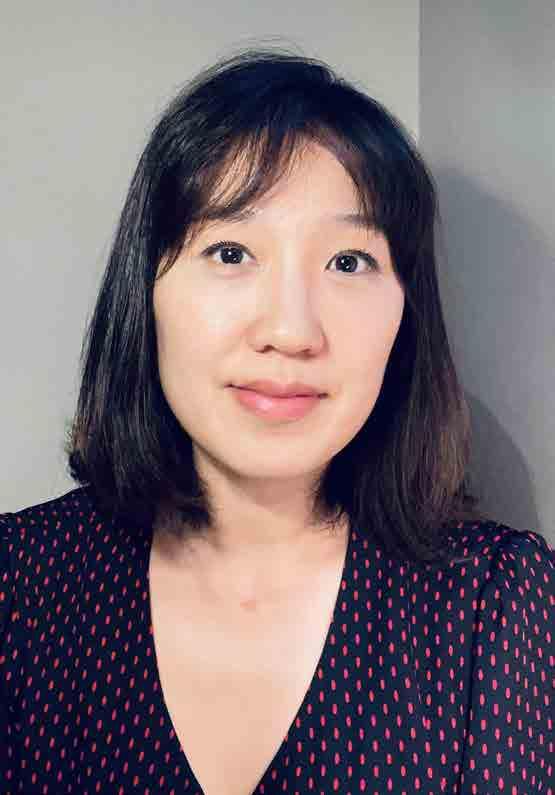
Advisor: Jeanne Henry
Maria Kim The goal of my study was to describe the instructional practices, teaching philosophies, and personal and professional backgrounds of teachers of color on Long Island who taught English language arts (ELA) in predominantly white classrooms. I was able to recruit as participants five teachers of color who taught ELA in different districts in Nassau and Suffolk counties.
As one of very few teachers of color in my district, I became aware that students of diverse backgrounds needed teachers who represented nondominant cultures. Also, many white students responded positively to instructional strategies such as the use of diverse literature, culture sharing, and exposure to multiple perspectives. As I read more deeply about this topic, I found that there is a great shortage of diverse representation in the teaching field, and at the same time, there is so much that teachers of color can bring to the table.
Dr. Jeanne Henry made herself available to me throughout the process of writing my dissertation, from reading, editing, and providing feedback, to brainstorming with me and offering moral support along the way. Her help was invaluable.
How long did you work on this research?
I began writing in the summer of 2020, which, as we all know, was a tumultuous time to grapple with issues of race and education. Despite the emotional heaviness of that time, my study became even more meaningful to me because of everything that had been going on.
I’d like to continue thinking about diverse students’ cultural and socioemotional needs in the classroom. Teachers play such a vital role in a student’s school life. There are so many excellent and passionate teachers of all backgrounds out there, but it’s difficult to tackle issues of culture, race, and linguistics amid the hustle and bustle of our daily work lives. I would like to contribute more to that field.
I will continue to teach and learn more about what my students need, and perhaps think about teaching pre-service courses if such an opportunity arises. I’d love to continue writing as well.
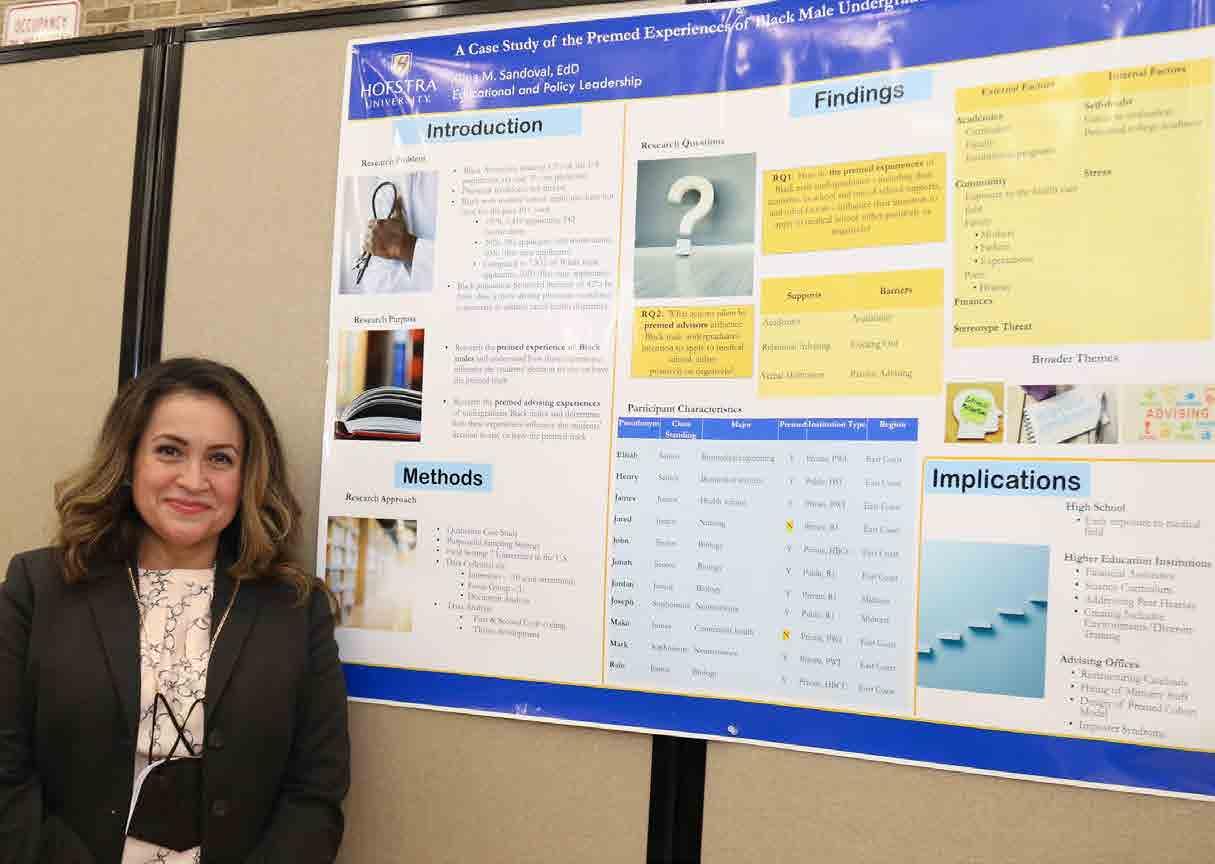
Gina Sandavol
EdD, Educational and Policy Leadership, May 2022 Hometown: Jersey City, NJ Project Title: A Case Study of the Premed Experiences of Black Male Undergraduate Students
Advisor: Rebecca Natow
Gina Sandavol
I saw a segment on the CBS Morning Show, where they featured Dr. Damon Tweedy, who wrote Black Man in a White Coat, where he described his experience pursuing medicine as a Black man in a predominantly white institution. This inspired my research.
There is a lack of Black male students that are going into medicine, especially at the undergraduate level; premed students are just not applying. The data shows that in 1978, there were 1,410 Black male applicants nationally, whereas in 2020, there we only 981 Black male applicants. I wanted to find out why this was happening, considering more Black males are graduating from college. I looked at the premed experience of Black males, as well as their premed advising experience. I intended to use my background in academic advising to assess this piece as a higher education administrator. I conducted a qualitative case study with 11 students across seven universities on the East Coast and the Midwest. The students needed to self-identify as Black males; hold sophomore, junior, or senior standing; and have at least one appointment with their academic advisor.
I found that there are external factors that these students cannot control such as finances and community stereotype threats. Secondly, there are internal factors that they are less likely to talk about. All these factors are influencing whether the students stay on the premed track. I also found that advisors are providing academic support but are more transactional; relational advising was less likely to occur. Advisors are practicing a lot of “cooling out,” which is an aspect of the 1960 theory by Burton Clark, where it is the advisor or counselor’s job to discourage a student and have them go in a direction that the advisor believes is better.
All the participants were intrinsically motivated, but they struggled with imposter syndrome. For many of these students, they were the only Black males in the classroom and felt no real connection to the other students. All the participants reported that their academic advisors had no real influence on their decision to apply to medical school. As an advisor myself, I was really surprised by this. I thought the advisors would have some role in the decision-making process, but they did not.
Dr. Rebecca Natow in the School of Education and my entire dissertation committee were a great support. I also had two outside mentors who helped me with my own imposter syndrome: my previous program advisor from the Loyola University Chicago School of Education, and a previous dean of students at Loyola University Chicago Stritch School of Medicine.
We need to provide more programming in high schools, so these students can begin to meet professionals in the field and determine if medicine is their career choice and get excited about it! For higher education institutions, this is a population that relies heavily on peer hearsay. Higher education institutions can address this by answering students’ questions directly, so they do not need to rely on their peers. For instance, if a peer says the curriculum is too tough, these students may step away. But if the institution sent different messaging, we might be able to keep them on track. We also need to create more inclusive environments and recognize stereotype threats. One of the students in the study had the highest score on his high school IB Biology exam, and he heard an administrator say, “wow, I didn’t know the Black kid was so smart.” This experience stayed with the student and really caused a sense of imposter syndrome for the student throughout college. Finally, advising offices can restructure caseloads so more relational and holistic advising can be done; they can hire more minority staff and create a premed cohort model where Black male students can meet regularly and feel the community support.
I would love to get this published one day in a publication like the Journal of the Association of American Medical Colleges.
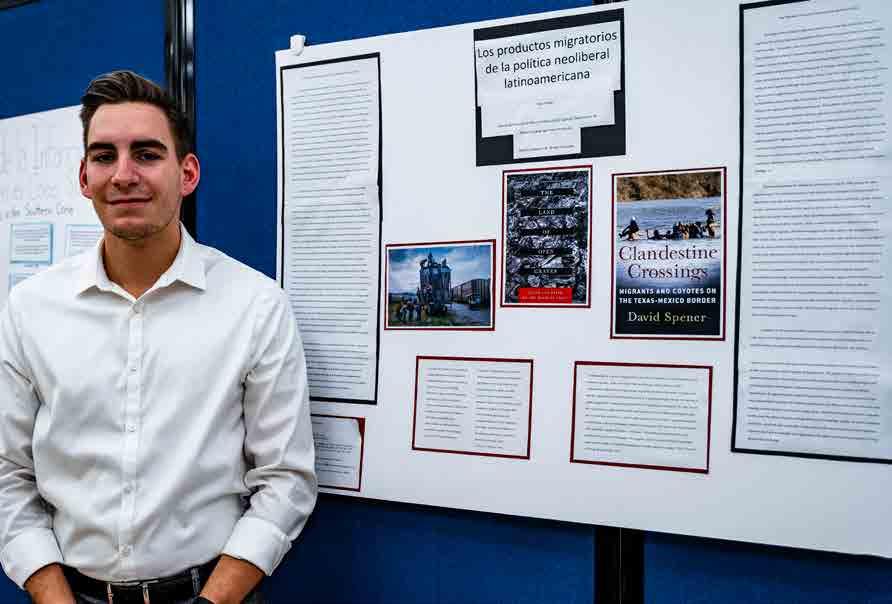
Public Health and Psychology (Health Professions and Human Services, and Hofstra College of Liberal Arts and Sciences)
Paul Woldt
Paul Woldt
BA, Spanish and Latin American & Caribbean Studies, May 2022 • Hometown: Lovettsville, VA Project Title: Los Productos Migratorios de la Politica Neoliberal Latinoamericana
Advisor: Benita Sampedro Vizcaya
Written by Leah Chiappino
Paul Woldt, a senior Spanish and Latin American and Caribbean studies double major originally from Frankfurt, Germany, used his own experiences as an immigrant to inspire him to study the personal, individual experiences of Central American migrants and their movements through the American continent.
His study focused on the last 20 years, while taking into account historical contexts and relying on personal ethnographic research from experts in the field.
Woldt’s main goal in his research was to highlight the stories told about the track many migrants take across the border that aren’t widely covered by the media.
“A lot of these people just die in the middle of the desert, and nobody ever finds them,” he said. “Their families never know what happens with them, and so there’s just this massive amount of unknown connection to the whole migratory experience.”
Woldt first became interested in this topic in his first year at Hofstra; he read a book by Jason De León about how the U.S. government deters migration by forcing migrants into areas that are naturally dangerous. “As a Spanish major in the United States, there’s no way to not be somehow in touch with mass migration,” Woldt said. “It’s just a subject that you are bound to face at one point or another.”
He continued his studies and used De León’s research as the basis of his own. He also included the work of David Spiner, who studied how the practice of hiring a coyote, a paid guide to help migrants cross the border, is often the only way migrants can do so safely.
Woldt presented his research as part of a final paper for his Contemporary Hispanic Thought Class, taught by Benita Sampedro Vizcaya, professor of Spanish Colonial studies.
Next semester, Woldt wants to use his research to prepare an argumentative paper for his senior departmental thesis. “My goal is to build an overall image of what that migratory experience looks like, as a whole and on a very personal level, and make that idea and those concepts more ideologically accessible to anyone that might read it,” he said. “Nobody, no human being, just wants to get up and leave their home. Nobody does that just for fun. Nobody does that just to annoy people on the other side.”
After graduation, Woldt plans to move back to Germany and do an apprenticeship to become a professional chef. “[The project] is just something I’m kind of passionate about,” he said. “I’m in college, and I should use this time to study something that’s important and makes a difference.”




